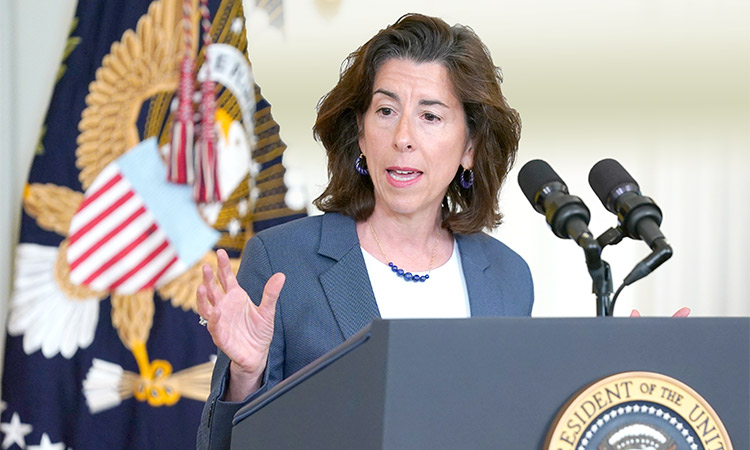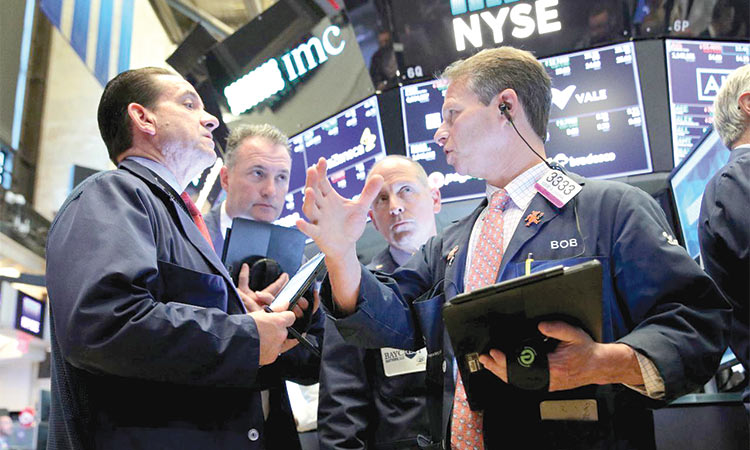UAE-US non-oil trade volume reached $31.4 billion in 2023

The photo has been used for illustrative purposes.
Sebright added, in statements to the Emirates News Agency (WAM), that US exports to the UAE reached $24.8 billion last year, exceeding 2022 exports of $20.8 billion, by 19 per cent, noting that the UAE remained the top US export destination in the Middle East and Africa for the fifth consecutive year.
The President of the US-UAE Business Council highlighted that US exports to the UAE support 125,000 jobs in the US, while UAE exports to the US totaled $6.6 billion last year.
Sebright said that UAE investments in the US market continue to grow, focusing on various sectors including real estate, manufacturing, healthcare, and technology. He pointed to three areas with greater potential for further cooperation between the two countries in 2024: healthcare and life sciences, financial services and private equity, and technology and artificial intelligence.
Sebright said that the UAE and the United States continue to build on the tremendous progress made last year in the lead-up to the UN Climate Change Conference (COP28) in the areas of renewable energy, food security, and sustainability, in addition to the continued strength of traditional foundations of the bilateral trade relationship between the two countries in sectors such as space, defence, and energy.
The US-UAE bilateral trade and investments relations are growing every year. In 2023, DMCC saw a rise of over 10 per cent in American companies joining its international business district, taking total American membership to 679 – about 45 percent of the 1,500 American businesses in the UAE.
DMCC sees further opportunity for American businesses in Dubai after the success of the latest Economic Policy Dialogue held between the US and UAE, which highlighted ambitions to strengthen trade and investment ties in key sectors within the digital economy.
The events saw 100 American executives attendees. Speakers and delegates advised on the opportunities on offer to American businesses in expanding through the Middle East, with DMCC playing a central role in connecting them to some of the world’s fastest growing markets via Dubai.
US factories output rises: Production at US factories increased more than expected in February amid mild temperatures, but data for the prior month was revised sharply down as manufacturing remains hamstrung by high interest rates.
Manufacturing output rebounded 0.8% last month after a downwardly revised 1.1% decline in the prior month, the Federal Reserve said on Friday. Factory output was previously reported to have dropped 0.5% in January, weighed down by frigid temperatures. Economists polled by Reuters had forecast factory output would rise 0.3%.
Production at factories fell 0.7% on a year-on-year basis in February.
But are there glimmers of hope for manufacturing, which accounts for 10.3% of the economy.
A survey from the Institute for Supply Management early this month showed customer inventories fell for a third straight month in February, and comments from firms about sales and the business outlook were fairly upbeat.
Motor vehicle and parts output accelerated 1.8% last month after declining 3.8% in January. Durable goods manufacturing production increased 1.0%. There were big increases in the output of wood products as well as miscellaneous goods.
Production of nondurable goods rose 0.7%, lifted by the chemicals, printing and support, and paper output categories.
Mining output rebounded 2.2% after plunging 2.9% in January. Utilities production fell 7.5% as demand for heating ebbed. That followed a 7.4% surge in January.
Overall industrial production gained 0.1% in February after falling 0.5% in January. Industrial production fell 0.2% on a year-on-year basis in February.
Capacity utilization for the industrial sector, a measure of how fully firms are using their resources, was unchanged at 78.3%. It is 1.3 percentage points below its 1972-2023 average.
The operating rate for the manufacturing sector rose six-tenths of a percentage point to 77.0%. It is 1.2 percentage points below its long-run average.
Meanwhile, consumers became slightly less optimistic about the economy this month, though they continue to expect inflation to cool further, a potential sign that price increases will keep slowing.
The University of Michigan’s consumer sentiment index, released Friday in a preliminary version, slipped to 76.5 in March, barely below February’s figure of 76.9. Americans’ outlook has essentially remained fixed since January, when it leapt higher. Sentiment is now about halfway between its all-time low, reached in June 2022 when inflation peaked, and its pre-pandemic averages.
Americans’ outlook on the economy will likely have a significant effect on the presidential race, which will likely focus heavily on perceptions of President Joe Biden’s economic record.
Friday’s consumer sentiment figure follows inflation reports this week that showed that for a second straight month, prices rose at a pace faster than is consistent with the Federal Reserve’s 2% target. The consumer price index rose 3.2% in February compared with a year ago, up from 3.1% in January.
Agencies







